Keeping your car in top condition requires regular maintenance, and one of the most essential tasks is changing your air filter. A clean air filter ensures that your engine receives the optimal amount of air necessary for combustion, resulting in improved performance, fuel efficiency, and a reduced carbon footprint. In this guide, we will walk you through the steps to change your car’s air filter like a pro.
- Why Change Your Air Filter?
- Tools You Will Need
- Steps to Change Your Car’s Air Filter
- 1. Locate the Air Filter
- 2. Remove the Engine Cover (if applicable)
- 3. Disconnect the Air Filter Housing
- 4. Remove the Old Air Filter
- 5. Clean the Air Filter Housing
- 6. Insert the New Air Filter
- 7. Reassemble the Air Filter Housing
- 8. Reattach the Engine Cover (if applicable)
- Final Steps
- Additional Tips for Maintaining Your Car’s Air Filter
- 1. Choose the Right Filter
- 2. Inspect the Filter Regularly
- 3. Be Mindful of Installation
- 4. Consider a Cabin Air Filter
- 5. Stay Informed on Maintenance
- When to Seek Professional Help
- Understanding the Importance of Air Filter Maintenance
- Signs That Indicate It’s Time for a Change
- Environmental Considerations
Why Change Your Air Filter?
Your car’s air filter plays a crucial role in the engine’s performance. Here are a few reasons why it’s important to change it regularly:
- Improved Engine Performance: A clean air filter allows for better airflow to the engine, enhancing its efficiency and power.
- Increased Fuel Efficiency: A clogged filter can lead to poor fuel economy, costing you more at the pump.
- Longer Engine Life: By preventing dirt and debris from entering the engine, you reduce the risk of wear and tear, prolonging its lifespan.
- Better Emissions: A clean air filter helps your vehicle meet environmental standards by reducing harmful emissions.
Tools You Will Need
Before you get started, gather the following tools:
- New air filter (check your owner’s manual for specifications)
- Screwdriver (flathead or Phillips, depending on your car)
- Socket wrench (if necessary)
- Clean cloth or rag
- Vacuum cleaner (optional)
Steps to Change Your Car’s Air Filter
1. Locate the Air Filter
Start by consulting your car’s owner manual to find the location of the air filter. In most vehicles, it is housed in a rectangular or cylindrical box on the engine’s intake manifold.
2. Remove the Engine Cover (if applicable)
If your vehicle has an engine cover, you may need to remove it first. Use a socket wrench or screwdriver to loosen the bolts or screws holding the cover in place.
3. Disconnect the Air Filter Housing
Using your screwdriver or socket wrench, carefully unscrew or unclamp the air filter housing. Make sure to keep track of the screws or clamps, as you will need them later.
4. Remove the Old Air Filter
Take out the old air filter from the housing. If it’s very dirty, you might consider using a vacuum cleaner to remove any loose debris from the housing.
5. Clean the Air Filter Housing
Wipe the inside of the air filter housing with a clean cloth or rag. This step helps eliminate any residual dirt or contaminants that may affect the new filter’s performance.
6. Insert the New Air Filter
Place the new air filter into the housing, ensuring it fits snugly and is oriented in the correct direction (there’s usually an arrow indicating airflow direction).
7. Reassemble the Air Filter Housing
Carefully reattach the air filter housing cover. Secure it with screws or clamps, tightening them firmly but not overly so; you don’t want to strip the threads.
8. Reattach the Engine Cover (if applicable)
If you removed an engine cover, put it back and secure it with the bolts or screws you previously removed.
Final Steps
Once everything is back in place, start your engine and listen for any unusual noises. A properly installed air filter should not cause any issues. Check your owner’s manual for recommendations on how often to change your air filter, but generally, it’s advisable to do so every 12,000 to 15,000 miles.
Changing your car’s air filter is a simple yet vital maintenance task that can lead to significant improvements in performance and efficiency. By following these straightforward steps, you can ensure that your engine breathes freely, enhancing its longevity and your driving experience. Remember, a little effort goes a long way!
Additional Tips for Maintaining Your Car’s Air Filter
While changing your car’s air filter is a straightforward task, there are several additional tips and best practices to keep in mind to ensure optimal performance and longevity of both the filter and your vehicle:
1. Choose the Right Filter
Not all air filters are created equal. Depending on your driving habits and environment, you may want to invest in high-performance or HEPA filters that offer better filtration capabilities. Always consult your vehicle’s manual or a trusted mechanic for recommendations tailored to your car’s needs.
2. Inspect the Filter Regularly
In addition to scheduled changes, it’s wise to check your air filter periodically. If you frequently drive in dusty conditions or heavy traffic, your filter may need to be replaced sooner than the standard interval. A quick visual inspection can save you from potential performance issues down the line.
3. Be Mindful of Installation
When installing the new air filter, ensure that it fits snugly in the housing. An improperly installed filter can allow unfiltered air to bypass it, potentially leading to engine damage. Double-check that there are no gaps or misalignments.
4. Consider a Cabin Air Filter
While you’re at it, don’t forget about the cabin air filter, which cleans the air that enters your vehicle’s interior. A clean cabin air filter can enhance the comfort of your driving experience, keeping allergens and pollutants at bay.
5. Stay Informed on Maintenance
Keep a maintenance log for your vehicle. Documenting when you change your air filter, along with other services, can help you track your car’s health and remind you of upcoming maintenance tasks. There are several mobile apps available to assist with this, or you can opt for a traditional notebook.
When to Seek Professional Help
While many car owners can easily change their air filter, certain situations may warrant professional assistance:
- Unusual Sounds: If you notice strange noises from your engine after changing the filter, consult a mechanic.
- Persistent Engine Light: If your check engine light remains illuminated after replacing the air filter, it could indicate a deeper issue.
- Excessive Dirt Build-Up: If the air filter housing is consistently dirty, it may indicate problems with your vehicle’s air intake system that need a professional’s attention.
Changing your car’s air filter is a small yet impactful task that can significantly enhance your vehicle’s performance and efficiency. By following the steps outlined in this guide and incorporating regular checks and maintenance, you can maximize your engine’s health and enjoy a smoother driving experience. Whether you’re a seasoned DIY enthusiast or a first-time car owner, taking these proactive measures will ensure that your vehicle runs like a dream for years to come.
Understanding the Importance of Air Filter Maintenance
While changing your car’s air filter is a straightforward task, understanding its significance can elevate your maintenance routine. The air filter is not just a component; it acts as the lungs of your engine, ensuring it gets the clean air it needs to perform efficiently. Over time, contaminants such as dust, pollen, and debris can clog the filter, leading to a host of problems—from reduced fuel efficiency to engine wear. By committing to regular inspections and timely replacements of your air filter, you are not only investing in your vehicle’s performance but also safeguarding your wallet in the long run.
Signs That Indicate It’s Time for a Change
Knowing when to change your air filter is crucial. Here are some telltale signs that it’s time for a replacement:
- Decreased Fuel Efficiency: If you find yourself refueling more frequently, a clogged air filter could be the culprit, as it restricts airflow and forces your engine to work harder.
- Unusual Engine Sounds: A struggling engine may produce sounds that are out of the ordinary, signaling that it’s not getting the proper airflow.
- Engine Warning Light: If the check engine light illuminates on your dashboard, it’s advisable to check your air filter along with other components.
- Reduced Acceleration: If your vehicle feels sluggish and unresponsive, a dirty air filter might be limiting engine performance.
Environmental Considerations
As we become more conscious of our ecological footprint, it’s essential to consider the environmental implications of air filter maintenance. A clean air filter not only benefits your vehicle but also contributes to a cleaner environment by reducing emissions. In some regions, implementing high-efficiency air filters can further enhance air quality, making your vehicle more eco-friendly. When disposing of your old filter, ensure you follow local regulations to minimize environmental impact—many auto parts stores offer recycling options.
Changing your car’s air filter is a simple yet impactful way to enhance performance and fuel efficiency while protecting the environment. Whether you’re a DIY enthusiast or a novice, this task is approachable and rewarding. By staying vigilant about the signs that indicate a need for replacement and understanding the broader implications of air filter maintenance, you can take a proactive approach to car care. Remember, a well-maintained vehicle not only drives better but also lasts longer, ensuring that every journey is as smooth as the last.
So roll up those sleeves and give your engine the breath of fresh air it deserves—your car, your wallet, and the planet will thank you!

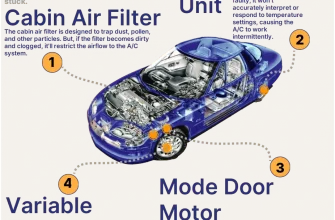
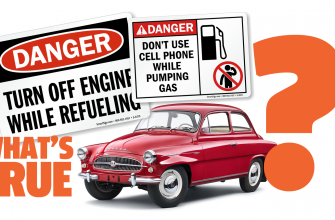
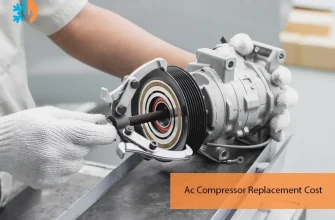


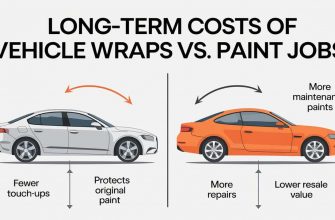
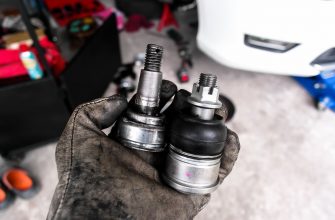

Fantastic article! The reasons for changing the air filter are clearly explained. I’m definitely going to keep up with this maintenance task.
I had no idea how much a clean air filter could affect my car
I followed the steps outlined here, and changing my air filter was easier than I expected. Great tips and very informative!
This guide is perfect for beginners like me. The step-by-step instructions were clear and easy to follow. Thank you for sharing!
This article is a game changer! I never realized how important the air filter was for my car’s performance. Thanks for the detailed guide!
Loved this guide! It made me feel confident about doing my own car maintenance. Can’t wait to see the improvement in fuel efficiency!
Very helpful information! I appreciate the list of tools needed. It made the whole process straightforward and manageable.